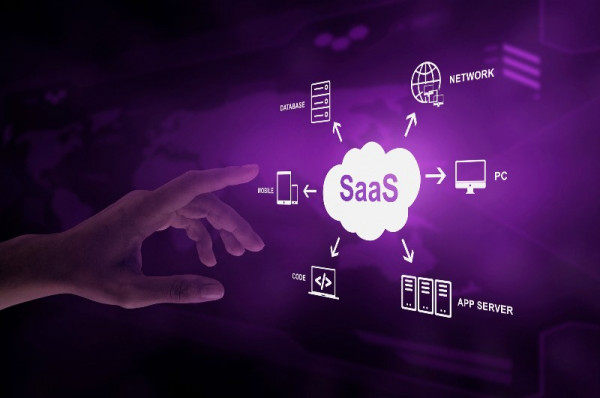With the onset of 2023, our world witnesses the global economy wavering as some nations declare a recession. To weather whatever storm this shall bring, organizations understand that the key to success is, in fact, Data. Tremendous advancements in the data industry in 2022, from the development of low-code data tools and AI assistants to the appearance of AI-generated content, heralded a forthcoming paradigm shift in which data-driven technologies and machine learning platforms would fundamentally alter workflows in a range of professions.
Therefore, 2023 appears to mark a turning point for Data analytics services and solutions and machine learning technologies, one whose effects will be felt by businesses, people, and society at large. As a result, skill transformation will be the unifying factor this year that enables businesses and people to take the lead in this paradigm change.
Let’s take a look at the 2023 predictions for data analytics trends.
Top 9 Trends in Data Analytics Services and Solutions in 2023
1. Artificial Intelligence
Artificial intelligence (AI), which enables businesses to analyze data and derive insights far more quickly than possible manually, is probably the technology trend that will impact how we live, work, and conduct business in 2023 and beyond.
Data analytics services and solutions are developing quickly thanks to AI, improving human capacities on both a personal and professional level as well as helping businesses better understand the data they collect. This entails anticipating customer demand to boost sales, enhancing warehouse storage levels, and expediting delivery times to enhance customer satisfaction.
2. Data-as-a-Service
Data as a service, or DaaS, is anticipated to have a larger reach this year as customers’ access to high-speed internet increases, ultimately resulting in higher productivity within the company.
Leveraging DaaS in big data analytics will make it easier for departments and industries to share data, streamline business review tasks for analysts, and eliminate the need for businesses to develop their own pricey, proprietary data collection and storage systems for a variety of applications.
3. Data Democratization
Continuing the empowerment of entire workforces will also be among the most significant trends this year. Non-technical individuals can collect and analyze data with the help of data democratization without the aid of data stewards, system administrators, or IT employees.
Around the world, artificial intelligence is demonstrating its value as a tool for providing a more inclusive education. Since data is essential for understanding customers and creating better products/services, this necessitates the frontline, shop floor, and non-technical workers, as well as departments like marketing and finance, to have the ability to act on data-driven insights.
4. Real-Time Data
In 2023, organizations will find the most value in real-time data and analytics. More technology that promotes quick adoption and enhances efficiency, interoperability, and performance across several industries will become available.
The most sophisticated data strategies will increasingly focus on the most valuable and recent data as more businesses turn to data to provide them with a competitive edge.
5. Edge Computing
There is no question that the data processing rate at the edge is expected to experience a significant rise, potentially increasing from the current 10% to 75% in 2025. IoT devices embedded with edge computing can immensely increase speed, flexibility, and agility. In addition, it can enable autonomous behavior and carry out real-time analytics.
Edge computing can optimize performance and storage by reducing the need for data to pass via numerous networks. Additionally, it more effectively lowers computing and processing rates than cloud computing.
6. Data Governance
As more governments pass legislation to control the use of personal and other sorts of data, guarantee data safety, and increase data value, data governance will also be a hot topic in 2023.
In data governance, cognitive capabilities are used to automatically find data, construct lineage, notify the appropriate stakeholders, and sustain optimized workflows without interruption. An inefficient data governance program can lead to unsatisfactory AI model training, missed opportunities, compliance violations and fines, influencing business choices, bad data quality, difficulties obtaining the correct data, and delays in analysis.
7. Cloud-based Self-Service Data Analytics
Self-service data analytics services and solutions that run on the cloud can help businesses increase their efficiency and strengthen their competitive advantage. By integrating cloud-based analytics into your organizational platform, you will be guaranteed that users will have access only to the required data. Self-service analytics has the potential to change a business from the inside out completely.
8. Data Mesh Outpaces Data Fabric
Organizations using data mesh principles will perform double-digit times better than those using a data warehouse-only strategy in 2023, which too anticipated at a 30% reduced cost.
It’s difficult for organizations to supply data as a product because of a number of variables, including data quality issues, scattered data, tool surplus, under-skilled teams, escalating expenses, and increased risk. With data mesh, organizations are free to reconsider how data products are made available to the larger business community.
9. NLP (Natural Language Processing)
In 2024, there will be more voice-enabled devices than the 8 billion mark worldwide. As organizations increasingly rely on diverse data and information for future planning, it is expected that NLP will take on a more prominent role in monitoring and tracking market intelligence. By chatting with data using AI-driven mixes of natural language processing (NLP) and natural language generation (NLG), conversational analytics is better able to give insights.
In the rapidly evolving digital landscape, organizations of all sizes are embracing the power of data analytics to enhance customer experiences, drive cost savings, optimize processes, and expand their reach. The integration of AI, ML, data sharing, and other cutting-edge concepts will further amplify the effectiveness and impact of big data analytics. Additionally, the ability of big data to enhance the security of sensitive information has become a key focus for many businesses. To navigate these transformative trends and uncertainties, it is crucial for organizations to stay ahead of the curve. Embracing artificial intelligence, the Internet of Things (IoT), and automation in daily operations will be instrumental in leveraging data analytics effectively. By partnering with a trusted data analytics provider like STL Digital, organizations can align their strategic business goals with the essential data analytics services and solutions, experiment with them, and make bold investments to drive growth and success in the years ahead.
FAQs
1. What is the usefulness of Edge Computing for businesses in current times?
Edge computing has generated a plethora of potential across a wide range of businesses with the introduction of 5G. Edge computing brings computation and data storage closer to where the data originates, making data more accurate and controllable, lowering costs, delivering faster insights and actions, and enabling continuous operations.
2. What is NLP?
NLP, or Natural Language Processing, is one of the numerous subfields of computer science, linguistics, and artificial intelligence that have evolved through time. The goal of NLP is to read and interpret human language.
3. How is Data Mesh different from Data Fabric?
A data mesh architecture includes data fabric, but data mesh takes this concept a step further. A data mesh is a socio-technical approach to data governance. Unlike data fabric, which is more focused on technology, it combines product thinking with a shift toward domain-driven data management.
4. What is the significance of self-service data analysis in data analytics via cloud-based management systems?
Human resources and finance executives are at the forefront of this shift, spending extensively on cloud-based technology solutions that provide all users with direct access to the required information. Self-service analytics places data directly in the hands and minds of the users it is designed to serve – they are the ones who require it.



